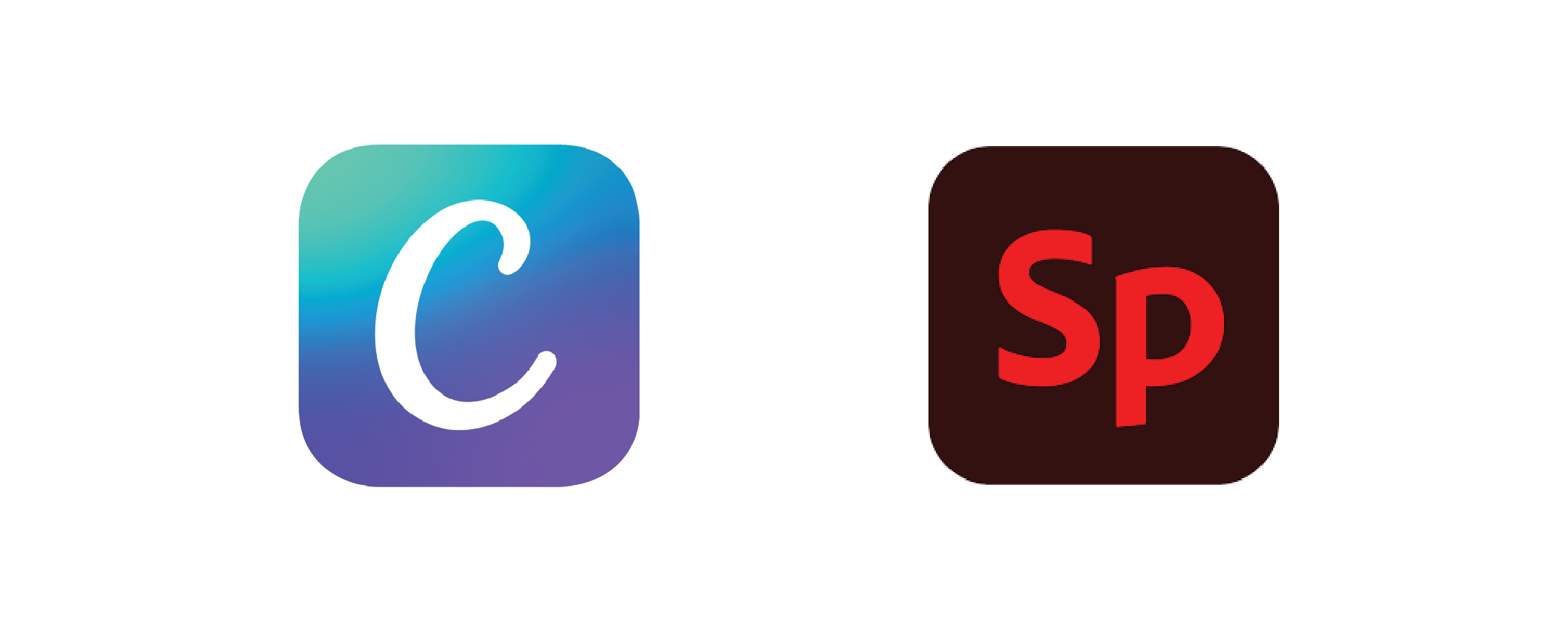There are two people in this world: those who love apps like Canva and Adobe Spark, and others who hate it. Okay, well, also a third category if you don’t know what the heck I’m talking about. But hey, you’re about to find out if you don’t know!
Some background info and fun facts.
Canva was made in 2012, and Adobe Spark created a similar concept in 2016. Both apps offer free and “pro” (with a cost) templates you can use to mix and add your own content. Canva has a variety of options for social media posts, presentations, flyers, business cards, and more. Honestly, I was shocked to see how much they can do. Adobe Spark is split into three different apps: one for graphics and posters, one for web design, and another for video. However, their website has it all in one place.
On Canva’s website they proudly state, “It only takes 23 seconds to learn.” These apps pride themselves in being speedy, both in learning and changing design elements—making it easy for anyone to create. So if it’s all so easy to make, then why am I still studying design?

AI is not a designer. Humans are.
Some fancy AI might be quick about producing basic designs to exist on a company’s Instagram feed, but a human designer is able to see the bigger picture. We can create content that actually sparks an emotional reaction. We create brand identities. We can think outside of the box and create unique designs. These are all things AI will never be able to do.


There is a right place, and a right time.
Apps like Canva and Adobe Spark have their place in the design world, or at least in the marketing/content creation aspect. Canva and Adobe Spark both have a way to upload your brand colors and logo to their app. This is a great solution to keep graphic designers from making that Instagram post needed in 15 minutes. Instead, someone else on the communications team can use the app to make something that works and will look okay. It won’t be the most unique content out there, but at least it will match the brand. Plus, it doesn’t distract the designer from some of their more important tasks.
Apps like these should never replace designers completely—and they never will. But it allows accessibility to small businesses, or individuals, who can’t afford a designer yet and need to get their message out there. It can help take some unnecessary pressure off of designers. Also, I like to think it brings awareness to why we need actual (human) designers.
Just don’t use these for a project in a design class, because you’ve got to let your own creativity shine (and you know, not cheat)!